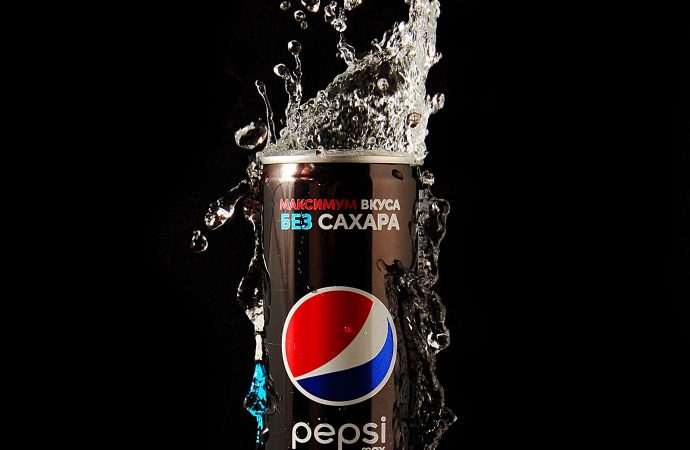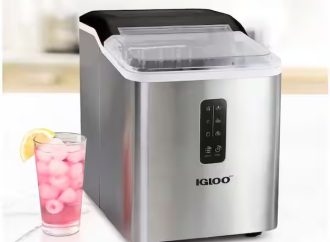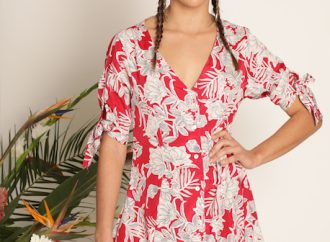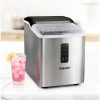Are you someone who doesn’t mind shelling out a few extra bucks for your favorite snacks and beverages? If so, then you’re not alone! Pepsi and Nestle have taken the market by storm with their expensive yet delicious products. But what makes these pricey treats worth the money? In this blog post, we will dive
Are you someone who doesn’t mind shelling out a few extra bucks for your favorite snacks and beverages? If so, then you’re not alone! Pepsi and Nestle have taken the market by storm with their expensive yet delicious products. But what makes these pricey treats worth the money? In this blog post, we will dive deep into the factors that contribute to customers’ willingness to buy these high-end snacks and drinks. From marketing strategies to consumer behavior, we’ll explore every aspect of why people are willing to spend more on their favorite indulgences from Pepsi and Nestle. So grab a snack (maybe even an expensive one!), sit back, and let’s get started!
Pepsi and Nestle’s Expensive Beverages and Snacks
When we think of Pepsi and Nestle, our minds automatically go to the delicious beverages and snacks they offer. From Pepsi’s signature cola to Nestle’s crunchy KitKat bars, these companies have managed to make us crave their products time and again.
One thing that sets Pepsi and Nestle apart from their competitors is the premium pricing strategy they adopt for some of their offerings. While other brands may focus on affordability, these two market leaders have successfully positioned themselves as providers of high-quality indulgences worth paying extra for.
But what makes these expensive treats so special? For starters, both companies invest heavily in research and development to ensure that their products not only taste great but also meet the changing needs and preferences of consumers.
Additionally, they use only the best ingredients sourced from around the world. Whether it’s real cane sugar in Pepsi or sustainably-sourced cocoa beans in Nestle chocolates – customers can feel good about indulging in something made with care.
All in all, while some may balk at paying a premium price for a beverage or snack when there are cheaper alternatives available – those who value quality over quantity know exactly why Pepsi and Nestle’s expensive offerings are well worth the splurge.
The Factors that Contribute to Customers’ Willingness to Buy
When it comes to expensive beverages and snacks from Pepsi and Nestle, there are several factors that contribute to a customer’s willingness to buy. One of the most significant factors is the perceived value of the product.
Customers are more likely to purchase an expensive beverage or snack if they believe that it offers better quality, taste, or nutritional value than other similar products on the market. This perception can be influenced by marketing efforts such as packaging design, branding, and advertising.
Another important factor is brand loyalty. Many customers have developed a strong affinity for brands like Pepsi or Nestle over time and are willing to pay a premium price for their favorite products. This loyalty may stem from positive past experiences with the brand or emotional connections associated with its messaging.
In addition, social status can also play a role in consumers’ willingness to buy expensive beverages and snacks. Some customers may view these products as luxury items that signal wealth or sophistication when consumed in public settings.
Convenience also plays a part in purchasing decisions. Customers who prioritize convenience may be willing to pay more for grab-and-go options like energy drinks or protein bars that fit seamlessly into their busy lifestyles without sacrificing quality.
There are various reasons why customers might be willing to splurge on expensive beverages and snacks from Pepsi and Nestle beyond just taste alone. The combination of perceived value, brand loyalty, social status signaling and convenience all contribute towards attracting potential buyers of these high-end snack choices.
How much are people willing to spend on these products?
One of the main questions when it comes to expensive beverages and snacks is how much customers are willing to spend on these products. It’s no secret that Pepsi and Nestle have premium lines of food and drinks, which come with a higher price tag compared to their regular products.
For some customers, they may be willing to pay more for high-quality ingredients or unique flavors that can’t be found in other brands. For others, purchasing expensive snacks or beverages serves as a status symbol or a way to treat themselves.
The amount people are willing to spend on these types of products can vary greatly depending on factors such as income level, personal values, and buying habits. Some consumers may only purchase these items occasionally for special occasions while others incorporate them into their daily routines.
There is no one-size-fits-all answer when it comes to how much people are willing to spend on Pepsi and Nestle’s expensive offerings. However, it’s clear that there is a significant market for premium food and drink options amongst consumers who prioritize quality over affordability.
How often do people purchase these products?
When it comes to purchasing expensive beverages and snacks from Pepsi and Nestle, the frequency of purchases varies greatly among customers. Some may only indulge in these products on special occasions or as a treat to themselves, while others may make them a regular part of their daily routine.
For those who purchase these products frequently, it could be due to factors such as convenience or brand loyalty. Many people lead busy lives and appreciate the ease of grabbing a quick snack or drink on-the-go, especially if it’s something they enjoy. Additionally, some customers develop strong connections with brands over time and feel compelled to continue purchasing their products.
On the other hand, those who don’t buy these items as often may have different priorities when it comes to spending money. They might prefer to save their cash for bigger purchases or prioritize healthier food options over indulgent snacks.
The frequency of purchasing expensive beverages and snacks from Pepsi and Nestle depends largely on individual preferences and circumstances. While some people might splurge regularly on their favorite treats, others may choose to indulge less often for various reasons.
Pepsi and Nestle’s Marketing Strategies
Pepsi and Nestle’s marketing strategies play a significant role in their customers’ willingness to buy expensive beverages and snacks. Both companies use various tactics to promote their products, including social media campaigns, sponsorships, and celebrity endorsements.
Pepsi is known for its successful partnerships with influential figures such as Beyonce, Britney Spears, Lionel Messi, and other popular celebrities. These collaborations have helped the brand reach new audiences while also appealing to its existing customer base.
On the other hand, Nestle focuses on creating innovative products that cater to different tastes and preferences of consumers. The company uses social media platforms like Instagram and Twitter to showcase new product releases or promotions.
Furthermore, both Pepsi and Nestle invest heavily in advertising during major sporting events such as the Super Bowl or FIFA World Cup. This provides an opportunity for them to gain more visibility among fans who are already engaged in these events.
Pepsi and Nestle’s marketing strategies are crucial factors that contribute significantly to customers’ willingness to purchase their expensive beverages and snacks. Through these efforts they successfully engage with customers through different channels which help them stand out from competitors within this highly competitive market segment.
Conclusion
To sum up, the willingness of customers to buy expensive beverages and snacks from Pepsi and Nestle is influenced by various factors such as product quality, brand reputation, packaging, marketing strategies, and personal preferences. These companies have successfully developed products that cater to different consumer segments with varying tastes and budgets. With their innovative marketing campaigns and distribution channels, Pepsi and Nestle continue to dominate the global snack food industry.
While some consumers may question the value of spending more on premium beverages or snacks when cheaper alternatives are available; others believe that quality comes at a price. Ultimately it is up to each individual consumer to decide what they value most in their snacking experience – whether it’s taste or affordability – but there’s no denying that Pepsi and Nestle have positioned themselves as leaders in providing high-quality options for those who are willing to indulge a little extra.























Leave a Comment
Your email address will not be published. Required fields are marked with *